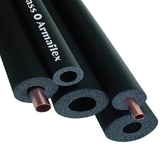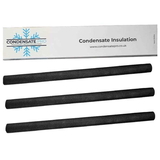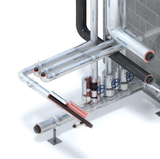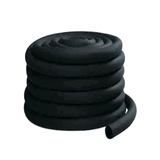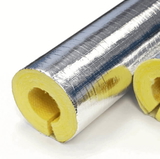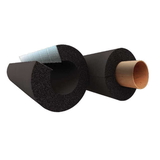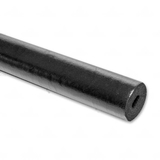- Blogs
- Guidance on Pipe Insulation for Home Heating Systems 2023
Guidance on Pipe Insulation for Home Heating Systems 2023

Recently, the National House Building Council in the UK rolled out fresh technical advice on the insulation of pipes for space heating and hot water systems in new residential construction. The updated guidelines are geared towards curbing heat loss and enhancing energy efficiency, impacting how builders plan and equip heating and hot water systems.
In this article, we'll delve into the top 10 pivotal alterations introduced in the latest pipe insulation guidelines. I'll break down the specific technical requirements for each change and scrutinise their implications for homebuilders, inspectors, and related trades.
1. Insulating Floor Voids is Now a Must
A significant shift involves the obligation to insulate space heating pipes as they traverse intermediate floor voids. Builders are now mandated to incorporate insulation on these in-slab pipe segments, even if they subsequently route them behind the plasterboard below. This rule extends to any void space between floors where heat could escape.
For home builders, this means meticulously planning pipe layouts to facilitate insulation access in the void. They might also need to opt for higher-grade insulation suitable for enclosed spaces. Successfully passing compliance inspections will hinge on demonstrating that floor voids boast adequate insulation.
Pipe Insulation
2. Insulation in Spaces Without Heating
The updated guidelines stipulate that pipes conveying space heating and hot water through unheated areas must now be insulated. This encompasses spaces like garages, attic voids, and exterior wall cavities. The insulation of these pipe sections aims to prevent unnecessary heat loss outside the thermal envelope.
Builders need to be meticulous in installing appropriate insulation on pipes traversing unconditioned attics, garages, or chilly wall spaces before enclosing them. Tradespeople must also exercise caution not to damage or overlook insulation on these pipes during other construction activities.
3. Hot Water Pipes Are Not Exempt
While previous guidance mainly focused on space heating pipes, the new guidelines explicitly mandate domestic hot water pipe insulation. This includes both hot water flow and return pipes, along with primary circulation pipes linking to hot water storage tanks.
Plumbers and heating specialists must ensure the proper insulation of hot water transport pipes, especially as they pass through voids and unheated areas. Neglecting insulation on these pipes could lead to costly rework to meet inspection requirements.
4. Prescribed Minimum Insulation Thicknesses
The new guidelines incorporate a table delineating the minimum insulation thickness required for different pipe diameters. Additionally, insulation conductivity and maximum heat loss parameters are explicitly defined.
Builders are tasked with guaranteeing that the insulation intended for each pipe aligns with these minimum thickness values based on its size and the type of insulation material used. Non-compliance with insulation standards could result in inspection failure, irrespective of pipe coverage.
Pipe Diameter (mm) | Thermal Conductivity (W/m/K) | Insulation Thickness (mm)
5. Insulating Pipes Around Cylinders
For systems featuring hot water storage tanks, pipes must now be insulated for one meter from connections on the tank. This includes the cold-water inlet, hot water outlet, and circulation links.
Installers need to meticulously insulate all pipework near cylinders, even in cramped spaces. Building inspectors will scrutinize to ensure that no uninsulated pipe sections are left exposed within the designated one-meter range.
6. Exercise Judgment in Tight Spaces
The updated guidelines acknowledge the impracticality of insulating pipes in some constrained areas. This includes pipework within joist zones or snugly sandwiched between plasterboard layers.
Builders are granted discretion to exercise their best judgment in omitting insulation in exceptionally tight spaces. However, they should diligently document the circumstances to justify any exceptions during commissioning.
7. Secondary Circulation Needs Insulation Too
All secondary hot water circulation pipework must now also be insulated to prevent background heat loss. Secondary circulation involves the use of recirculation pumps and branch return lines to maintain readily available hot water.
Construction teams must identify and properly insulate secondary circulation pipes, along with other hot water transport lines.
8. Transitional Timeline for Compliance
The guidelines lay out transitional timelines for the industry to embrace these changes. England and Wales have until January 2024 to fully integrate the new standards, while Scotland faces an earlier deadline in February 2023.
Homebuilders should start incorporating these pipe insulation specifications into all new projects moving forward. Delaying until the deadlines could strain resources as all builders rush to adopt changes simultaneously.
9. Effective Communication with Inspectors
With more stringent insulation requirements, effective communication with inspectors becomes crucial. Builders must emphasize how specifications are met and explain instances where full insulation is impractical.
Utilising photos, diagrams, and on-site explanations showcasing obstacles and solutions will substantiate cases where pipes aren't fully insulated as required.
10. Anticipated Industry Guidance
As builders adjust practices to align with the new guidelines, issues and ambiguities are likely to arise. Additional industry guidance is anticipated to address common questions and clarify uncertainties.
Technical experts are expected to provide further support information once builders have hands-on experience implementing the new specifications at scale.
In Conclusion
The updated pipe insulation guidelines in the UK signify a substantial change for homebuilders. With stringent new requirements now in place for insulating space heating and hot water pipes, construction practices must evolve.
Close collaboration across trades will be vital to identify and rectify any insulation issues. Open communication channels with regulators must be maintained, especially when deviations from technical guidance are necessary.
Ultimately, adherence to the new guidelines will yield improved energy efficiency and homeowner benefits. However, achieving this requires commitment and diligence from builders to correctly apply the specifications on a broad scale across all new housing projects.

Samuel Hitch
Managing Director
Buy Insulation Online.
Leave A Reply
Your feedback is greatly appreciated, please comment on our content below. Your email address will not be published. Required fields are marked *













